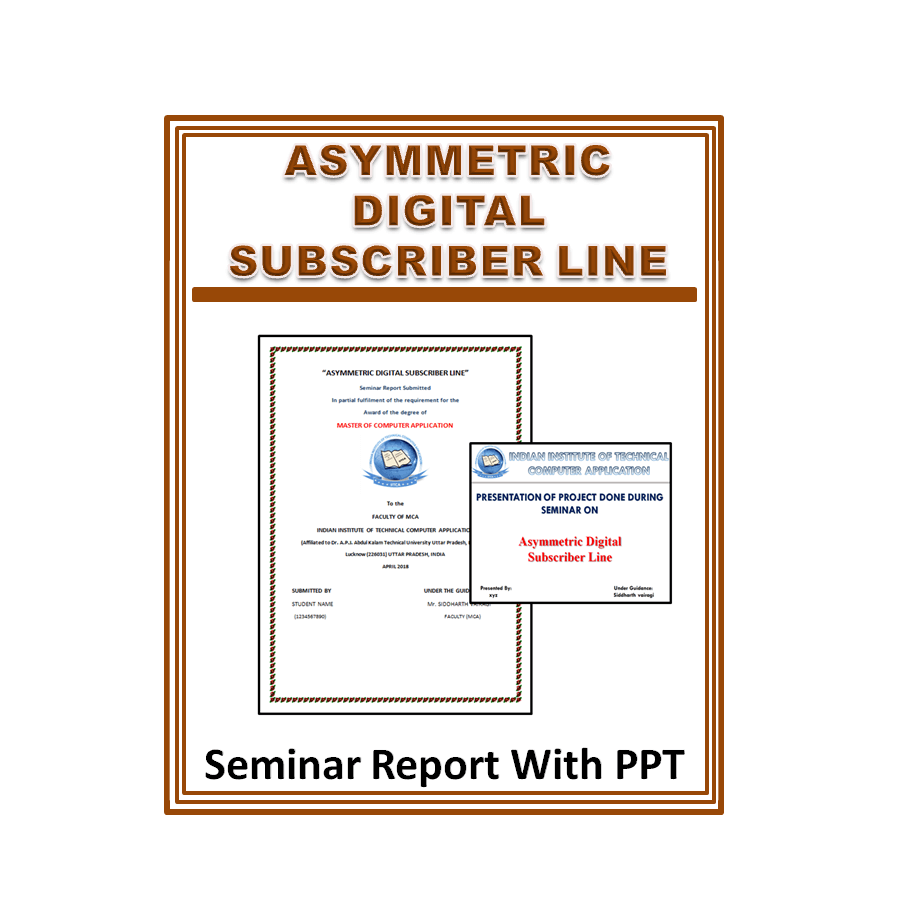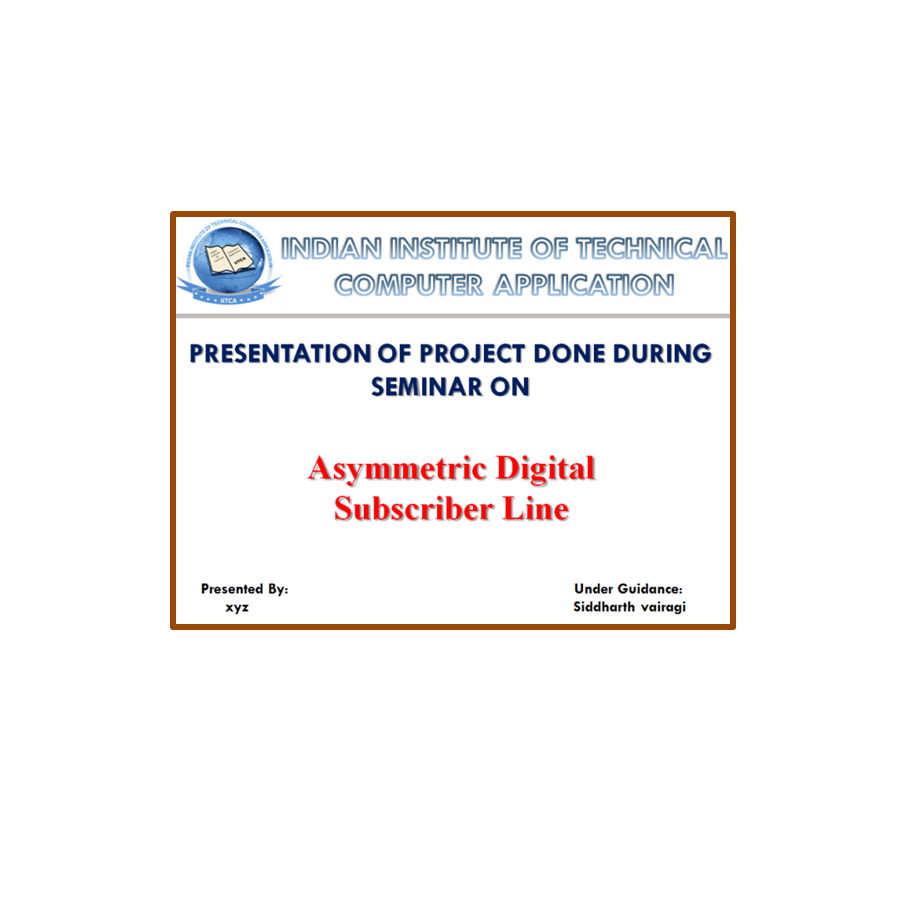Description
INTRODUCTION
Digital Subscriber Line (DSL) is a technology that brings high bandwidth information to homes and small businesses over the existing 2 wire copper telephone lines. Since DSL works on the existing telephone infrastructure, DSL systems are considered a key means of opening the bottleneck in the of the existing telephone network, as telephone companies seek cost-effective ways of providing much higher speed to their customers. DSL is a technology that assumes digital data does not require change into analog form and back.
This gives it two main advantages. Digital data is transmitted to your computer directly as digital data, and this allows the phone company to use a much wider bandwidth for transmitting it to you, thereby giving the user a huge boost in bandwidth compared to analog modems. Not only that, but DSL uses the existing phone line and in most cases does not require an additional phone line.
Asymmetric Digital Subscriber Line Seminar Report
Page Length : 30
Content :
- DSL: An Introduction To ADSL
- The Inner Workings
- Various Applications Of ADSL
- Technology Description
- Competitors And Comparison
- The Current & Future Status
- Conclusion
- References
Asymmetric Digital Subscriber Line Presentation Report (PPT)
Page Length : 16
Content :
- Introduction
- What does ADSL mean
- How Does ADSL Work?
- Requirements
- What different types are there?
- ADSL Loop Architecture
- ADSL Speed Comparison
- ADSL Speed Factors
- ADSL Modem Structure
- Benefits of ADSL
- Disadvantages Of ADSL
- Conclusion
- References










Reviews
There are no reviews yet